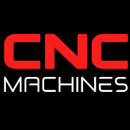Understanding Machinability in CNC Machining: A Comprehensive Breakdown

Understanding Machinability in CNC Machining: A Comprehensive Breakdown
Machinability is a critical factor in CNC machining that affects the efficiency, cost, and quality of the final product. Understanding the key components of machinability can help manufacturers optimize their processes, reduce tool wear, and achieve superior surface finishes. This article breaks down the essential aspects of machinability, including surface finish, speed and feeds, tool life, and other important considerations.
Surface Finish
Surface finish refers to the texture and smoothness of a machined surface, which can significantly impact the functionality and aesthetics of a part. The surface finish is influenced by several factors:
- Material Properties: Different materials respond uniquely to machining processes. For example, softer materials like aluminum typically produce a better surface finish compared to harder materials like titanium.
- Cutting Tool Geometry: The shape and sharpness of the cutting tool play a crucial role in determining the surface finish. Tools with a smaller nose radius and sharper cutting edges generally produce smoother surfaces.
- Machining Parameters: Feed rate, cutting speed, and depth of cut must be optimized to minimize surface roughness. Lower feed rates and higher cutting speeds often result in better surface finishes.
Speed and Feeds
Speed and feeds refer to the rotational speed of the cutting tool (spindle speed) and the rate at which the cutting tool moves through the material (feed rate). These parameters are vital for achieving the desired material removal rate and avoiding tool wear or damage. Key considerations include:
- Cutting Speed (SFM): Measured in surface feet per minute, cutting speed should be adjusted based on the material being machined. Higher speeds can improve surface finish but may also increase tool wear.
- Feed Rate (IPM): Measured in inches per minute, feed rate affects both the surface finish and the tool's life. Optimal feed rates ensure efficient material removal while minimizing tool stress.
- Depth of Cut: The depth of material removed in a single pass affects the load on the tool. Shallower cuts usually produce better finishes but may increase the total machining time.
Tool Life
Tool life refers to the duration a cutting tool remains effective before it needs replacement. Maximizing tool life is crucial for maintaining productivity and controlling costs. Factors influencing tool life include:
- Tool Material: Carbide tools generally offer longer life and better performance compared to high-speed steel (HSS) tools, especially when machining hard materials.
- Coatings: Coatings like titanium nitride (TiN) or diamond-like carbon (DLC) can significantly extend tool life by reducing friction and wear.
- Cooling and Lubrication: Proper use of coolants and lubricants helps dissipate heat and reduce tool wear, thereby extending tool life.
ref. wikipedia.org
Other Important Components
- Material Composition: The machinability of different materials varies widely. For example, free-machining steels are designed to be easier to cut, while materials like Inconel and stainless steel pose more challenges due to their toughness and work-hardening properties.
- Tool Wear Mechanisms: Understanding different wear mechanisms (e.g., abrasion, adhesion, diffusion) helps in selecting appropriate tool materials and coatings to mitigate wear.
- Vibration and Stability: Minimizing vibrations through proper machine setup, tool balancing, and use of damping materials enhances machinability and surface finish.
- Heat Generation: Excessive heat can lead to thermal expansion, affecting dimensional accuracy and causing tool wear. Effective heat management is crucial for maintaining quality.
Machinability is a multifaceted concept that requires a comprehensive understanding of various factors, including surface finish, speed and feeds, tool life, and material properties. By optimizing these components, manufacturers can improve efficiency, reduce costs, and produce high-quality parts. Continuous advancements in tooling materials, coatings, and machining technologies further enhance the machinability of a wide range of materials, paving the way for more innovative and precise manufacturing processes.
References
- Smith, J. (2023). "Optimizing Surface Finish in CNC Machining." Journal of Manufacturing Processes.
- Brown, L. (2022). "The Impact of Cutting Tool Geometry on Surface Finish." International Journal of Machining and Machinability.
- Jones, R. (2021). "Determining Optimal Cutting Speeds for CNC Machining." CNC Machining Today.
- White, A. (2020). "Feed Rate Optimization for Efficient CNC Machining." Manufacturing Engineering Magazine.
- Davis, P. (2019). "Enhancing Tool Life with Advanced Coatings." Tooling & Production.
- Taylor, M. (2018). "The Role of Coolants in CNC Machining." Machinery and Tools.
- Wilson, T. (2017). "Material Properties and Their Effect on Machinability." Materials Science Forum.
- Hall, D. (2016). "Managing Heat in CNC Machining." Precision Engineering Journal.


